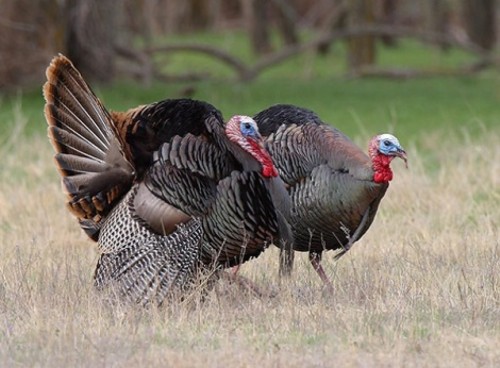Whether given to friends or family, a holiday dinner makes a great gift. It provides a leisurely time with (ideally) great company gathered around food that should go beyond boxed stuffing, powdered mashed potatoes, store-bought rolls and steamed frozen vegetables.
But to really raise the holiday dinner bar, look at the bird. There are many ways to move beyond frozen turkeys, ranging from free-range fowl to substituting a prime cut of meat such as leg of lamb or beef tenderloin. The ultimate centerpiece, however, would be a wild turkey killed by none other than the host or hostess.
The Hunt
First, a special hunting license is needed, which in Utah requires hunter-safety training, a basic game license, and a special license for hunting turkeys. In Utah, unlike many states, turkey hunting is only allowed in the spring because of a smaller turkey population, said Dave Olsen, upland game coordinator for the Division of Wildlife Resources (Wildlife.Utah.gov).
Like any hobby, hunting equipment can run from utilitarian to excessive. In the case of turkey hunting, the basics are a gun or bow, head-to-toe camouflage clothing, turkey decoys and a turkey caller to attract birds.
Olsen says that success in turkey hunting depends on “patience, sitting still and a good call.” In reality, there are many different kinds of calls and ways to make them, but none of them can be mastered quickly, and most people continue to perfect them through their lifetime.
The Kill
A killed turkey will need to be cleaned, which can be done on the spot (field dressing) or, if the hunter is close enough, at home. With field dressing, the main goal is to get all of the organs out of the turkey while trying not to soak the feathers with blood, Olsen said. Then, the cavity is rinsed, dried, and transported home. (Articles by Rob Ramsdale at WildTurkeyZone.com provide a great online resource for handling dead birds).
Once back in the comfort of your home, the turkey will still need to have its feathers removed. To do this, heat a pot of water to 140 degrees, dunk the turkey in to soak the feathers and start plucking. Another option is to skin the turkey, feathers and all, but this only is done if the turkey is not going to be cooked whole.
The Chef
The bird is now killed, cleaned and plucked, leaving only the cooking. While wild turkey is similar to the domestic turkeys that most Americans consume, Brian Dowler of the National Wild Turkey Federation (nwtf.org) said there are some notable differences. First, because wild turkeys are a lot more active, they have less fat and their dark meat—especially thighs—will be tougher and slightly more stringy, but still very flavorful. Size-wise, the prepped bird is going to be smaller, likely weighing 10 pounds or less, so plan either the guest list or serving portions accordingly.
Because of the differences in meat texture, bird size, and fat content, Dowler said, wild turkeys are cooked faster and hotter, although they can still be stuffed and roasted like a domestic bird. For his part, Dowler prefers to deep fry his bird, although the NWTF Website has many recipes for about any method of preparation.
More by Josh Loftin
-
Smoking Help, Farm Taxes & Gallivan Skating
Apparently, Salt Lake City officials believe that a premium price is justified for a small, outdoor rink with an ambiance that includes construction noise and heavy equipment ...
- Dec 1, 2010
-
Amendment Madness, Free Legal Aid & Lobbyist Influence
U.S. Rep. Rob Bishop, R-Utah, plans to propose an amendment to the U.S. Constitution that would allow states to veto an action ...
- Nov 24, 2010
-
Anti-affirmative action, TSA Protest & Federal $$
Legislators look to stop affirmative action. Jason Chaffetz still hates body scanners, but doesn't want to protest them in airports. And Utah legislators hate federal money a little bit less after elections.
- Nov 17, 2010
- More »



